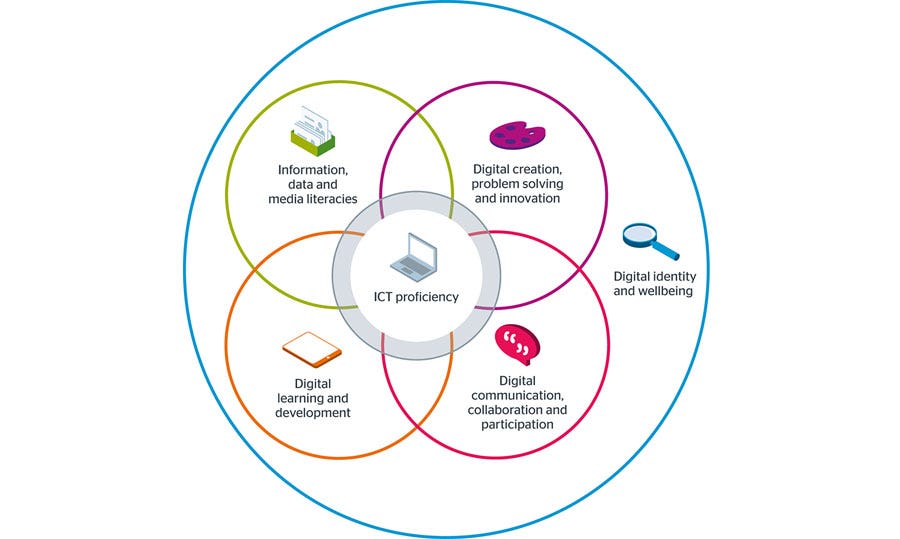This blog post is a part of #ONL221.
Many of us get onto the internet to learn, work and engage everyday but how often do we reflect on the act of logging onto the internet? How do we navigate and learn on the internet?
These are two questions I have been reflecting on this week and attempt to briefly answer here. During the webinar on digital literacies, David White introduced the Internet Mapping Project which aims to map how people view the internet. Reflecting on how I viewed the internet felt like a natural place to start finding answers to the questions I had.
The Internet
 My internet map in March 2022
My internet map in March 2022
The internet to me is a place where I go to to seek knowledge and connection. I use it for learning and interaction both for work and personal use. It connects me to the issues of the world. I used the brain as the representation of home because for me the internet takes a huge cognitive load to process and I would like/have to put on the sleep button on it every now and then.
Looking at my map and those created by individuals around the world reminded me of the multitude of ways in which people view and interact with the internet. These views are shaped by their experiences, environment and motivations for using the internet and these factors in turn also impact their learning skills online (one component of digital literacy).
What is digital literacy?
The Western Sydney University refers to digital literacy as “having the skills one needs to live, learn, and work in a society where communication and access to information is increasingly through digital technologies like internet platforms, social media, and mobile devices.” Similar to other definitions, it highlights a key point — digital literacy does not simply refer to one’s functional ability to use the computer or a specific tool online.
 Six elements of digital literacies
Six elements of digital literacies
Marc Prensky talks about the ‘Digital natives’ vs ‘Digital immigrants’ to explain the concept of digital literacy. He highlights how students born in the digital age are ‘native’ speakers of the digital language and those not born in the digital age have to adopt these technologies and are digital ‘immigrants’.
“Digital Natives are used to receiving information really fast. They like to
parallel process and multi-task. They prefer their graphics before their text rather than the opposite. They prefer random access (like hypertext). They function best when networked. They thrive on instant gratification and frequent rewards” — Marc Prensky
Characterising groups of people in terms of age or when they were born does not take into account the other factors that might affect digital literacy. Being a global health nerd, I can’t help but draw a parrallel to the social determinants of health to illustrate this further. There are many determinants (social, political, economic etc.) that influence who has access to the internet and digital tools, how much access and support they receive in adopting them and when they get this support and access.
My digital literacy
Growing up with access to the computer and the freedom to explore the internet has definitely shaped my ICT proficiency. University education and being in an academic institution have also given me access and exposure to a varied number of educational tools and support to learn them. It has also taught me how to effectively search for information and opportunities on the web and to a large extend maintain a good identity and well-being.
Week 1 has been a good reminder that everyone’s digital literacies will be different based on a myraid of factors sometimes beyond their control. It is important to recognise this and support everyone’s learning in the best way possible. Looking forward to exploring this further in Week 2’s topic on sharing and openess!
